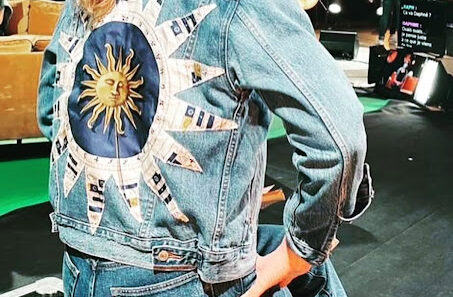Cultural appropriation did not expeditiously become a common occurrence of discussion, it slowly evolved as magazines, companies and designers negligently negated the common beliefs of religion, cultures and societal sects making a hostile incursion into the fashion apparel market. Adoption of an element or elements of one culture or identity by members of another culture or identity is referred to as cultural appropriation. When individuals of a dominant culture appropriate from minority cultures it is considered to be contentious. It is also the undetected or inappropriate adoption of one people’s or society’s habits, practices, views, etc. by members of another, usually more dominant, people’s or culture.
Fashion has always drawn from culture, embraced global inquiry, and used music and art to create the tone for visual design. While the early days of trade allowed for cultural interchange by extending commerce, bringing exotic textiles to new markets, and allowing never-before-seen novelties to inspire ideas, it also allowed for cultural appropriation. And, in today’s world, cultural appropriation may be a minefield for firms who make mistakes. When done appropriately and tastefully, cultural appropriation may be a celebration of that cultural interchange. It can, however, draw from cultures and people’s heritage, frequently leaving them out of the story totally. Cultural appropriation is defined as “the act by which specificities of a given culture, such as symbols, artefacts, genres, rituals, or technologies, are used by members of a different culture,” according to Dr. Benedetta Morsiani, a research fellow at the University of Westminster in London in the of Modern Languages and Cultures.
Gucci, for example, was chastised for cultural appropriation when its autumn 2018 catwalk presentation featured white models wearing turbans. Dissatisfaction grew when the brand put the turban on sale at Nordstrom for $790. The Sikh Coalition, named after the religious group, Sikhs, that wears the cloth headwraps as part of religious observance and advocates for religious rights, stated on social media, “The turban is not just a monetizable accessory; it’s a religious article of faith that millions of Sikhs regard as sacred.” Many people consider this cultural appropriation to be improper because individuals who wear the turban for fashion will not department understand its deep religious significance.”

Even in 2011 according to a group of enraged Hindus, a swimwear runway presentation crossed the line from sensual to sacrilegious. Lisa Burke, the main designer of the Lisa Blue Swimwear line, said she had no clue she would offend people when she sent models down the runway during Australian Rosemount Fashion Week in tiny suits symbolizing the goddess Lakshmi. Designer Burke quickly yanked the designs featuring the Hindu goddess and issued an apology on Facebook. “The image of Goddess Lakshmi will not appear on any piece of Lisa Blue swimwear for the new season, with a halt put on all production of the new range and pieces shown on the runway from last week removed,” the brand wrote in a statement. “The use of images of Goddess Lakshmi was not in any way a measure of calculated risk-taking, simply it was a desire to celebrate different cultures and share that through our brand.

Similarly, Concerns had also developed in response to workplace dress regulations that prevent or discourage Black people from having natural hairstyles. When Marc Jacobs had the Hadid sisters walk his catwalk show in dreadlock wigs, the unstated component of the backlash he encountered was in regard to the world’s inequities highlighted, but no mention of the style’s origins or spiritual importance to Rastafarianism was made. There have been provoking commentaries on how the line between cultural appropriation and cultural appreciation is thin, and the test here is whether or not the minority culture from whom the values or ideas are ‘taken’ is omitted from the narrative. The unpleasant reality is that these minority subcultures are frequently excluded from the fashion business from the start, and even when a style or trend they exhibit is eventually ‘borrowed’ by a larger company, the subculture’s contribution is frequently ignored. Using a component of someone’s culture as inspiration while excluding others from that culture is a form of stealing and skirting the problem will benefit no one. Karl Lagerfeld, Chanel’s late Creative Director, developed the Paris-Bombay Metiers d’Art collection in 2011. The aesthetics of India were used as inspiration, with saree-esque drapes, anarkalis, and salwar-kameez sprawled across the runway. Furthermore, the mostly white models walked the runway in bindis, naths, maang- tikas, hath-phools, and dreadlocks. No one, however, protested to the show. It is not because Chanel did not offend people, but because minority groups did not have the same level of representation as they do now. Indeed, minority communities can now communicate their long-held concerns and opinions through social media.

In March 2017, Vogue Arabia published their inaugural issue, which featured a veiled Gigi Hadid. The much-anticipated unveiling elicited screams of cultural appropriation from the audience. They expected a woman from the Middle East to be on the cover. Muslim women all throughout the world risk assault, hatred, and prejudice because they wear a hijab. As a result, fans chastised Gigi for wearing her hijab as a simple fashion accessory for the session.

Selena Gomez sang Come & Get It at the MTV Movie Awards in 2013. She walked in wearing a veil and a bindi as an adornment for her performance. In addition to the bindi, she included a Bollywood dance sequence in her choreography. Offended Indian fans vented their displeasure on social media. Bindi should not be worn casually for indecent performances or as a fashion accessory. Sabyasachi Mukherjee and Christian Louboutin collaborated in 2017 to produce a limited-edition collection of shoes and bags for men and women called “Candy Store.” Classic Christian Louboutin styles were reworked and created in Sabyasachi’s collection’s most magnificent silk materials embroidered with zardozi. The shoes and bags were truly one-of-a-kind and custom-made. Kim Kardashian graced the cover of Vogue India in 2018, wearing a variety of traditional Indian ensembles custom-made by prominent Indian designers such as Anita Dongre, Sabyasachi Mukherjee, Anamika Khanna, and others. Anaita Shroff Adajania, Vogue India’s Fashion Director, also styled each look.
In order to prevent cultural appropriation, a source community may seek protection under copyright laws. Cultural products and expressions, such as drawings, stories, and songs, are held jointly within a society and passed down from generation to generation, thus no single individual can claim authorship of any specific piece. For two reasons, this provides a hurdle for source communities seeking copyright protection. First, the author’s death date is required information in determining the length of protection under the various Copyright Acts of various nations. Second, while the Copyright Act protects anonymous work, the duration of that protection is determined by the year in which the work is published. It is simply impossible to determine how long a cultural work may be protected under the Copyright Act without an identifiable creator and a date of publication. Furthermore, even if a cultural product was previously granted intellectual property protection, its term of protection would have already expired due to the passage of time. As a result of these factors, cultural products frequently enter the public domain. Another impediment for source communities wanting to have their cultural products recognized as legal trademarks is that the law requires the cultural products to be “used in commerce” and meet the “distinctiveness” condition. If source communities achieve these two requirements, there is one more hurdle to overcome: if they pursue infringement claims against appropriators for using the source communities’ marks, they may find it difficult to raise dilution allegations due to the absence of universal recognition of the marks.
Overall, any legislative reform that seeks to improve cultural product protection must balance the competing goals of preserving a source community’s cultural identity with the need to preserve the free movement of ideas in favor of cultural exchange. After all, Cultural cross-pollination is a necessary aspect of multicultural and non-segregated societies.
To summarize, avoiding cultural appropriation in fashion is not difficult. Fashion is all about originality. The trips and international experiences we part-take in should always have a good impact on our ingenuity. But fashion design is also a responsibility, especially when you have the potential to teach the contemporary audience about another oppressed culture in the past.
















